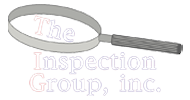Safety is paramount in multi-family housing, where a diverse group of individuals and families live in close proximity. As property managers and owners, it’s your responsibility to ensure that safety protocols are top-notch. This involves understanding egress routes, ensuring fire safety, and other crucial safety protocols that ensure residents’ well-being. Our property inspection experts would like to offer you some tips on enhancing safety protocols in multi-family units.
Tips for Safety Protocols in Multi-Family Units
1. Understanding the Importance of Egress
Egress refers to the entire action of exiting a building. It’s not just about having a door but about having clear, unobstructed pathways that allow for quick and safe exits, especially during emergencies.
- Windows as Egress: Especially in multi-story units, windows, particularly those in bedrooms, can serve as vital emergency exits. Ensure that all window locks are functional and that windows can be easily opened from the inside.
- Corridors and Stairwells: These should be free from obstructions at all times. Regular checks and communicating the importance of clear pathways to residents can prevent blockages.
2. Fire Safety Protocols
Fire is a formidable risk in densely populated multi-family units. Enhancing fire safety goes beyond installing smoke detectors.
- Regular Equipment Checks: Fire alarms, sprinkler systems, and fire extinguishers should be checked regularly to ensure they’re in working order.
- Evacuation Plans: Clear evacuation plans should be displayed in communal areas and within each apartment unit. Regularly conduct drills to familiarize residents with the process.
- Safe Storage Guidelines: Inform residents about the dangers of storing flammable materials improperly. Provide guidelines and, where possible, dedicated spaces for safe storage.
3. Carbon Monoxide and Gas Leaks
Many multi-family units have gas-powered appliances, which come with the risk of carbon monoxide poisoning if not maintained properly.
- Carbon Monoxide Detectors: Install these near bedrooms and other vulnerable areas. Like smoke detectors, they need to be checked regularly.
- Educate Residents: Offer guidelines on the safe use of gas appliances and what to do in the event of a suspected gas leak.
4. Secure Access and Surveillance
Safety is not just about responding to emergencies but preventing potential threats.
- Secure Entry Points: Implement electronic access controls or a 24/7 security guard presence to monitor and control who enters or exits the property.
- CCTV Surveillance: Cameras at entry points, parking lots, and communal areas can deter unwanted behavior and provide evidence if necessary.
5. Emergency Response Kits
Consider equipping each unit or floor with an emergency response kit, containing items like:
- A first-aid kit
- Flashlights with extra batteries
- A whistle to signal for help
- A list of emergency contact numbers
Preparing for Safety Inspections
Safety in multi-family units is multi-faceted, requiring attention to detail and a proactive approach. By implementing robust egress systems, fire safety protocols, and other measures, you not only ensure the well-being of your residents but also foster trust and peace of mind, making your property even more appealing.
Remember, at The Inspection Group, we specialize in understanding and implementing safety protocols in housing units. If you ever need guidance, consultations, or inspections, our team of experts is always ready to assist.





